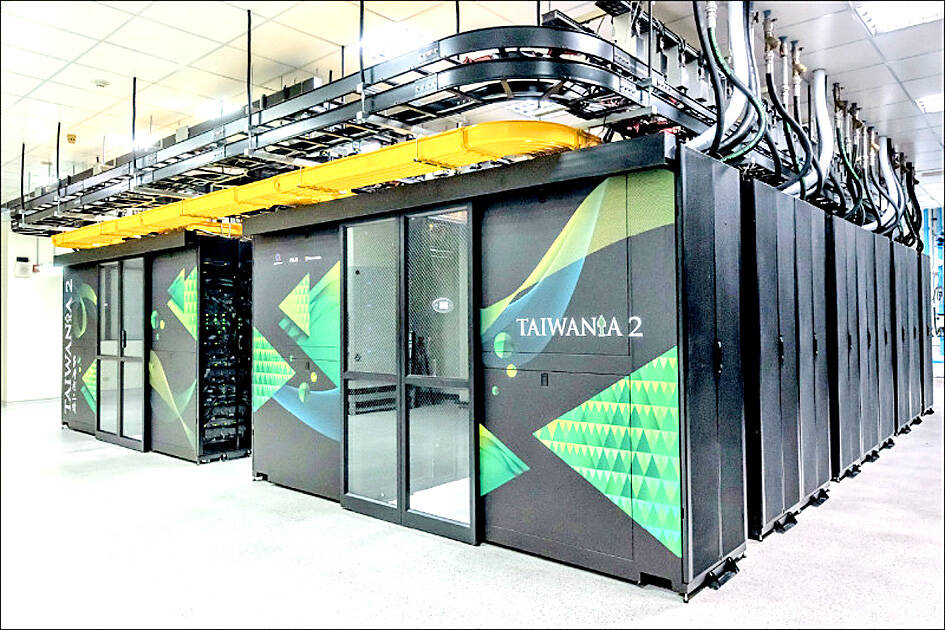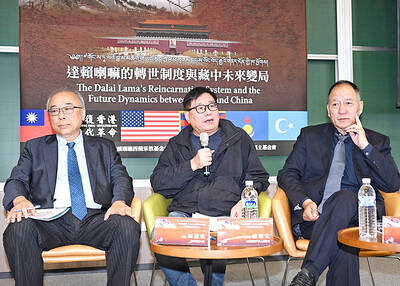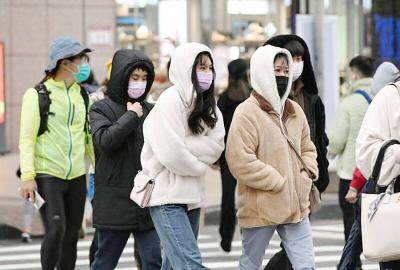Taiwan’s first next-generation supercomputer for artificial intelligence (AI), which would be equipped with Nvidia’s H100 graphics processing units (GPU), is scheduled to begin working with a capacity of 16 petaFLOPS in May. The government is planning to gradually expand the computing power to 200 petaFLOPS to facilitate the development of applications for generative AI and artificial general intelligence, also known as strong AI.
One petaFLOP is equivalent to 1 quadrillion calculations per second.
The National Center for High-performance Computing (NCHC) is tasked with building supercomputers to be used by researchers of physics, chemistry, mathematics, atmospheric science, engineering, life science and AI.

Photo courtesy of the National Center for High-Performance Computing
Researchers, the government and academic institutions can apply to access those computers.
The center’s supercomputer for AI, Taiwania 2 (台灣杉二號), has a computing power of nine petaFLOPS, which is capable of processing massive datasets, deep learning and AI computing. It was built in 2018 using Nvidia’s VI00 GPU.
With the rapid development of AI, the center wanted to build a next-generation AI supercomputer with more advanced GPUs to succeed Taiwania 2. The new supercomputer, which uses Nvidia’s H100 GPU as its main framework, is to be available for use in May and would have a computing power of 16 petaFLOPS, the NCHC’s plan showed.
It also plans to increase the computing power of the new supercomputer to 100 petaFLOPS, or even 200 petaFLOPS. The scale would be determined by the funding allocated to the project.
The center has yet to decide on the name for the new supercomputer.
Council officials said that the new supercomputer would facilitate the development of generative AI and strong AI, and could be integrated into a one-stop AI cloud service platform when a traditional Chinese version of Trustworthy AI Dialogue Engine is added.
Generative AI uses generative models to produce text, images, videos or other forms of data, while strong AI refers to machines that have intelligence and capabilities comparable to human cognition. The latter possesses the ability to learn, reason and adapt to unfamiliar environments.
The platform would provide computing power and a large language model base, which would help reduce the amount industry operators spend on developing a large language model base, they said.
It would also allow industry operators of various disciplines to create customized knowledge bases and other applications using their own datasets, they added.
The NCHC also uses the Taiwan 3 and the Forerunner 1 for high-performance computing, which were built using central processing units.
It plans to upgrade the computing power and energy use efficiency of supercomputers through the Taiwan Chip-based Industrial Innovation Program and Southern Silicon Valley project, with the goal of reaching 480 petaFLOPS in the government sector by 2029.
In the same year, the nation’s accumulative computing power would top 1.2 exaFLOPS when efforts from the private sector are included.

ALIGNED THINKING: Taiwan and Japan have a mutual interest in trade, culture and engineering, and can work together for stability, Cho Jung-tai said Taiwan and Japan are two like-minded countries willing to work together to form a “safety barrier” in the Indo-Pacific region, Premier Cho Jung-tai (卓榮泰) yesterday said at the opening ceremony of the 35th Taiwan-Japan Modern Engineering and Technology Symposium in Taipei. Taiwan and Japan are close geographically and closer emotionally, he added. Citing the overflowing of a barrier lake in the Mataian River (馬太鞍溪) in September, Cho said the submersible water level sensors given by Japan during the disaster helped Taiwan monitor the lake’s water levels more accurately. Japan also provided a lot of vaccines early in the outbreak of the COVID-19 pandemic,

Kaohsiung Mayor Chen Chi-mai (陳其邁) on Monday announced light shows and themed traffic lights to welcome fans of South Korean pop group Twice to the port city. The group is to play Kaohsiung on Saturday as part of its “This Is For” world tour. It would be the group’s first performance in Taiwan since its debut 10 years ago. The all-female group consists of five South Koreans, three Japanese and Tainan’s Chou Tzu-yu (周子瑜), the first Taiwan-born and raised member of a South Korean girl group. To promote the group’s arrival, the city has been holding a series of events, including a pop-up

TEMPORAL/SPIRITUAL: Beijing’s claim that the next Buddhist leader must come from China is a heavy-handed political maneuver that will fall flat-faced, experts said China’s requirement that the Dalai Lama’s reincarnation to be born in China and approved by Beijing has drawn criticism, with experts at a forum in Taipei yesterday saying that if Beijing were to put forth its own Dalai Lama, the person would not be recognized by the Tibetan Buddhist community. The experts made a remarks at the two-day forum hosted by the Tibet Religious Foundation of His Holiness the Dalai Lama titled: “The Snow Land Forum: Finding Common Ground on Tibet.” China says it has the right to determine the Dalai Lama’s reincarnation, as it claims sovereignty over Tibet since ancient times,

Temperatures in some parts of Taiwan are expected to fall sharply to lows of 15°C later this week as seasonal northeasterly winds strengthen, the Central Weather Administration (CWA) said today. It is to be the strongest cold wave to affect northern Taiwan this autumn, while Chiayi County in the southwest and some parts of central Taiwan are likely to also see lower temperatures due to radiational cooling, which occurs under conditions of clear skies, light winds and dry weather, the CWA said. Across Taiwan, temperatures are to fall gradually this week, dropping to 15°C to 16°C in the early hours of Wednesday